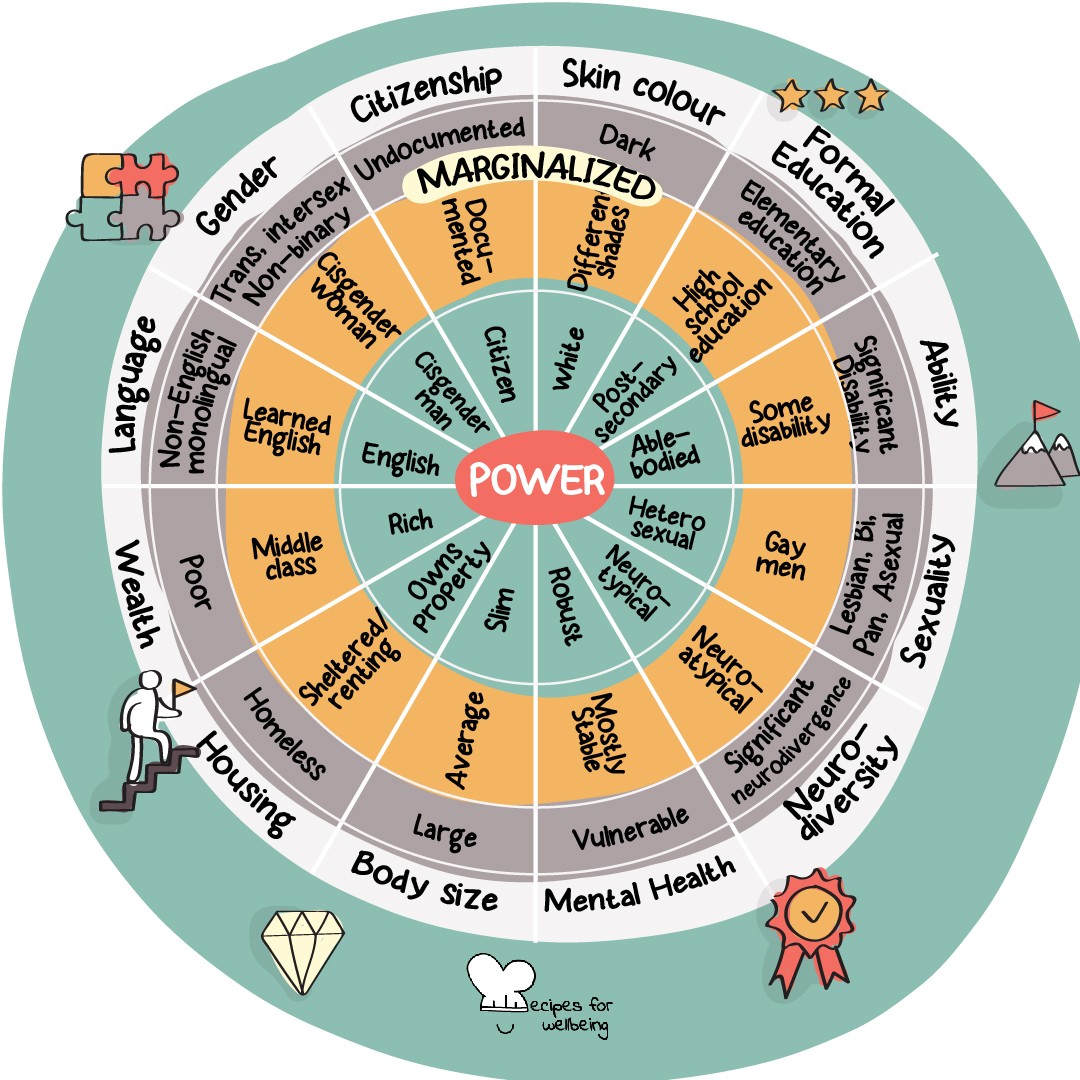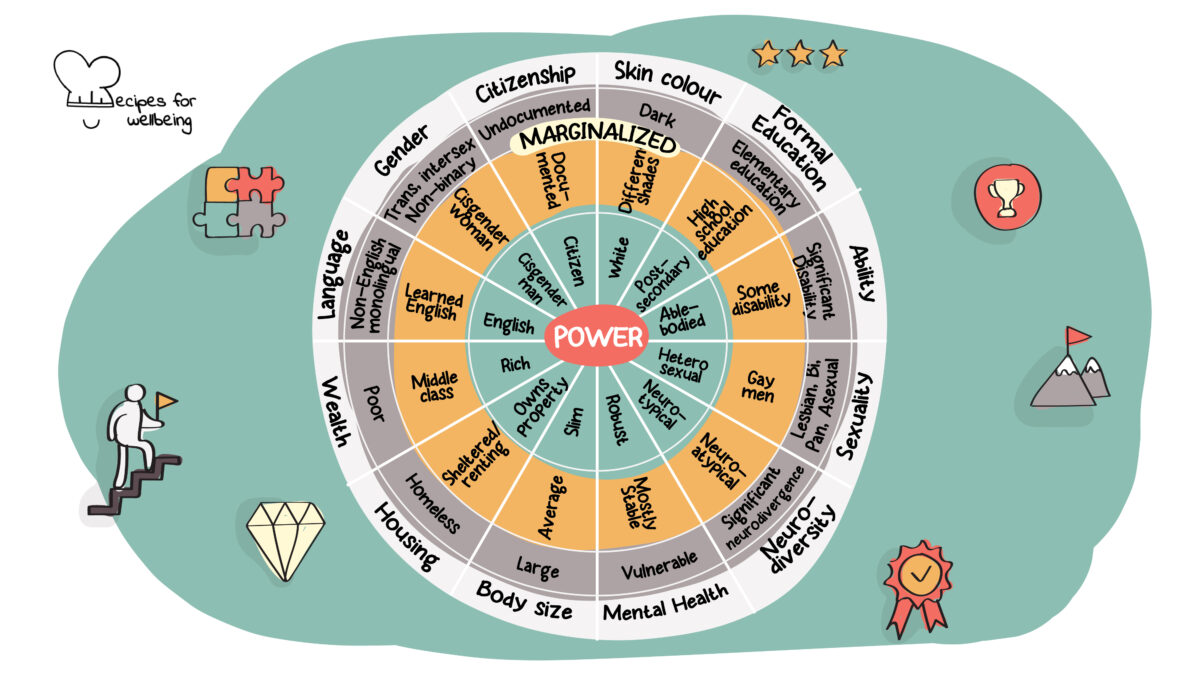
The wheel of power and privilege
If we don’t center the voices of marginalized people, we’re doing the wrong work. ―Tarana Burke
👥 Serves: 1–30 people
🎚 Difficulty: Hard
⏳ Total time: 1 hour
🥣 Ingredients: A group of people, trust, respect, non-judgment, 1 wheel of power and privilege template per participant, 1 pen per participant
💪 Nutritional values: Empathy, Awareness, Compassion, Tolerance, Acceptance

The wheel of power and privilege
📝 Description
Mapping marginalisation in an intersectional way.
The wheel of power and privilege is a reflective activity to map and explore issues of power and privilege in an intersectional way. It can be done alone as a self-awareness tool or in a group to highlight how different people might benefit from or be marginalised by systems in our society. It is a powerful practice to boost awareness, compassion, and tolerance.
This activity requires thorough facilitation, and should not be conducted carelessly or lightly. It is along the lines of our recipe “Privilege walk” and both need a certain level of trust and safety in the group. Make sure to facilitate this in a space that feels comfortable and where you won’t be disturbed. Plan for enough time so you are not rushed through the process. We also advise to add extra buffer time after the activity for participants to decompress.
This recipe has been inspired by Sylvia Duckworth’s illustration of the wheel of power and privilege. If you are looking for a slightly easier adaptation, check out our recipe “Take a step forward”. Or, if you are looking for an introductory practice before facilitating this activity, you may wish to consider “The wheel of social identity” recipe.
👣 Steps
Step 1 – Preparation (5’)
Set up a private comfortable space where you won’t be disturbed and invite your participants to find a seat around the circle. Hand out a template and a pen to each participant. Frame the activity by using the information provided in the description.
Step 2 – Self-assessment (10’)
Invite participants to go through the wheel and assess their proximity to power (closer to the centre of the circle) or to marginalisation (closer to the outer boundary of the circle) for each category. They can place a symbol or circle their position across the various dimensions. Remind them to be kind with themselves as they do this self-assessment: the intention is not to judge where they stand, but rather to have a well-rounded awareness of where they might be privileged/marginalised in life. Assure them that if it becomes too much, they can step out for a moment.
Step 3 – Small group sharing (30’)
Depending on the size of your group and the objectives of your session, you may decide to split participants into small groups (3–5 people each) and invite them to spend the next 30 minutes sharing their experiences. Remind them that the intention is not to judge each other’s power or marginalisation, but rather learn to acknowledge the nuances behind every person’s identity. Invite them to practise active listening. Provide them with a few prompts to guide their conversation:
- To what extent were you aware of the areas in which you are privileged/marginalised?
- What areas are you uncomfortable with (be it because you are privileged or marginalised)?
- When people see/meet you, what identity do they see first (or give more importance to)? What identity would you like them to acknowledge, too?
- What misconceptions do people tend to make about you (e.g. assume that you are privileged because of XYZ)?
Step 4 – Large group reflection (15’)
Invite the small groups to return to the large circle and devote at least 15 minutes to debrief on the experience. Here are a few prompts:
- What did you learn about yourself and others through this wheel?
- How might this mapping help us refrain from quick judgments to acknowledge the multi-faceted dimensions of ouridentities?
- What actions might we take to use our power in a certain aspect to support those who are marginalised?

